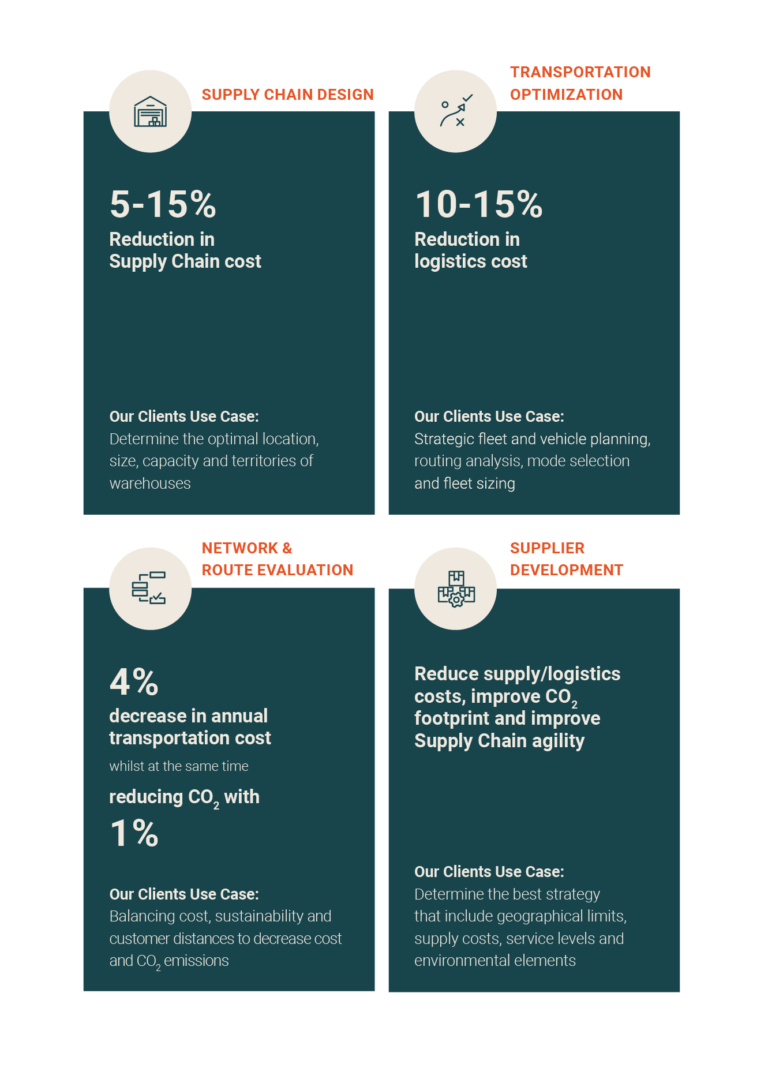Understanding inventory optimization is key if you want to optimize your Supply Chain with technology. In this blogpost we will look into the details.
Today’s consumers demand more options and greater variety. Trends change quickly. The result is that companies are carrying more slow-moving items with irregular, intermittent demand patterns. Traditional ABC inventory planning, developed in the 1950s, just doesn’t work in this world. Instead, we suggest to use inventory optimization software. It should use self-adaptive demand and inventory models to automatically define the optimal mix of inventory across the multi-echelon Supply Chain. That way you can achieve aggressive service level targets while minimizing inventory and reducing costs, at the same time. As a company you are able to manage slow-moving and intermittent demand items more effectively.
The model is highly reliable because of the proprietary analytical relationships between inventory and customer service levels, even for very slow moving and intermittent demand items. This allows the system to optimize even very large assortments, including products in the “long tail”, balancing inventories across different locations and different levels in the bill of materials (BOM).
Meet high service levels while minimizing inventory
Instead of creating a “one-size-fits-all” inventory mix within item groups defined by rudimentary classification criteria, the inventory optimization approach differentiates service and inventory targets across products, bill-of-materials levels, and distribution network locations to most efficiently meet desired customer service level objectives.
Free up working capital
By applying advanced modeling and artificial intelligence (AI) to optimize inventory at the individual SKU and location level, you are typically able to reduce overall inventory levels by 10-30%. Less money tied up in inventory means you have more cash available for better uses.
Inventory modelling
The inventory modeling technology is capable of eliminating the gross approximations of traditional inventory management, creating very reliable relationships between average inventory and service levels for each SKU and location. This allows the inventory optimization solution to define the optimal inventory mix across products and network to meet service targets at the lowest cost.
Service-driven optimization
Unlike ABC inventory planning, which has an operational perspective, service-driven inventory optimization centers on sales, marketing, and customers. It uses categories called “service classes” that sales and marketing people can easily relate to. Then it optimizes every SKU-Location against a target service level for each service class. The end result is an aggregated service class goal with the lowest possible stock investment.
Multi-echelon inventory optimization (MEIO)
To truly serve the end customer, the entire network–from raw materials suppliers and factories through distribution centers and wholesalers–needs the right items in stock. The technologies which we favor suggests optimal inventory levels at each stage of the supply chain, simultaneously balancing across multiple echelons, locations, and different Bill-of-Material (BOM) levels. It finds the most globally efficient balance between upstream and downstream inventory while optimizing safety stocks. It supports centralized demand planning, lowers costs across the Supply Chain, and streamlines operations.
Probabilistic forecasting
The probabilistic forecast provides the foundation for inventory planning, and helps manage the risk that comes from demand volatility by providing a range of possible values with their probability of occurrence. Advanced machine learning enhances traditional demand forecasts by modeling internal sources of noise and incorporating the effect of external data.
Understanding inventory optimization is key if you want to optimize your Supply Chain with technology.
If you want to know more about Supply Chain from an end-to-end perspective then you can always check out this online-brochure or download our whitepaper via the below link.
